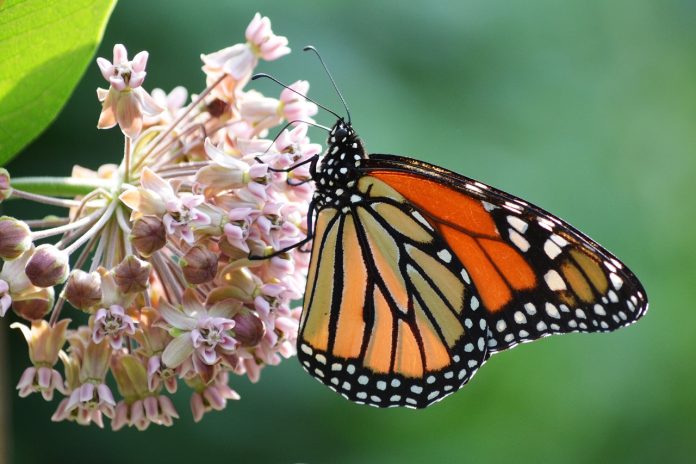
Monarch butterflies, with their beautiful orange and black wings, are some of the most well-known butterflies in North America.
Unfortunately, they are in danger of disappearing.
Monarch caterpillars can only eat the leaves of milkweed, a native wildflower. As milkweed has become scarce, so have the monarchs.
But research shows that planting milkweed in home gardens can significantly help increase monarch habitats.
A new study in the journal Frontiers in Ecology and Evolution examined how urban milkweed gardens could support monarchs.
Researchers and community scientists monitored milkweed plants in city gardens to see if they attracted butterfly eggs. They discovered that even small gardens in cities can attract monarchs and become homes for caterpillars.
“In this study, we found that monarchs can find the milkweed wherever it is, even in planters on balconies and rooftops,” says Karen Klinger, a Geographic Information Systems analyst at the Field Museum and the study’s lead author.
Monarch butterflies have a unique and challenging migration pattern. The eastern population starts in Mexico and moves up across North America in the spring and summer.
“As they travel, they lay their eggs. When those adults die, the next generation continues the migration northward, reaching southern Canada. At the end of summer, a new super generation migrates all the way back south and survives through the winter,” Klinger explains.
It takes multiple generations of caterpillars eating milkweed to complete this journey each year. Monarchs depend on milkweed plants along their migration path.
“There used to be wild milkweed along farmland in the Midwest, but now pesticides kill the milkweed, causing much of the monarchs’ habitat to disappear,” says Klinger.
Monarch populations have declined due to the loss of milkweed. They have been considered for endangered species status by conservation groups.
“If we don’t do something soon, monarchs are going to be in serious trouble,” warns Aster Hasle, a lead conservation ecologist at the Field Museum and a co-author of the study.
Scientists wondered if milkweed gardens in urban areas could help bridge the gap left by the disappearing rural milkweed.
Klinger and Hasle worked with over 400 volunteers around Chicagoland to monitor milkweed plants in their yards and neighborhoods. They recorded monarch activity on 810 patches of milkweed over four years, collecting 5,905 observations.
“We saw some amazing things,” says Klinger. “One participant had a planter on a condominium roof with five large caterpillars.”
The study found that common milkweed was key to attracting monarchs and their eggs. Older, established milkweed plants did better than younger ones. Additionally, having a variety of blooming plants helped monarchs lay more eggs by providing nectar for adult butterflies.
Illinois recently passed the MONARCH Act, which restricts HOAs from banning native plantings and offers support for creating native and pollinator-friendly gardens.
While monarchs are just one species of insect, they indicate the overall health of the ecosystems they live in.
“Monarchs need a lot of the things other insects need, like blooming flowers. What’s good for monarchs is good for other pollinators too. And we’re in the midst of a global insect decline, so it’s important to help,” says Hasle.
Planting milkweed, even in small urban gardens, can make a big difference for monarch butterflies and other pollinators.



